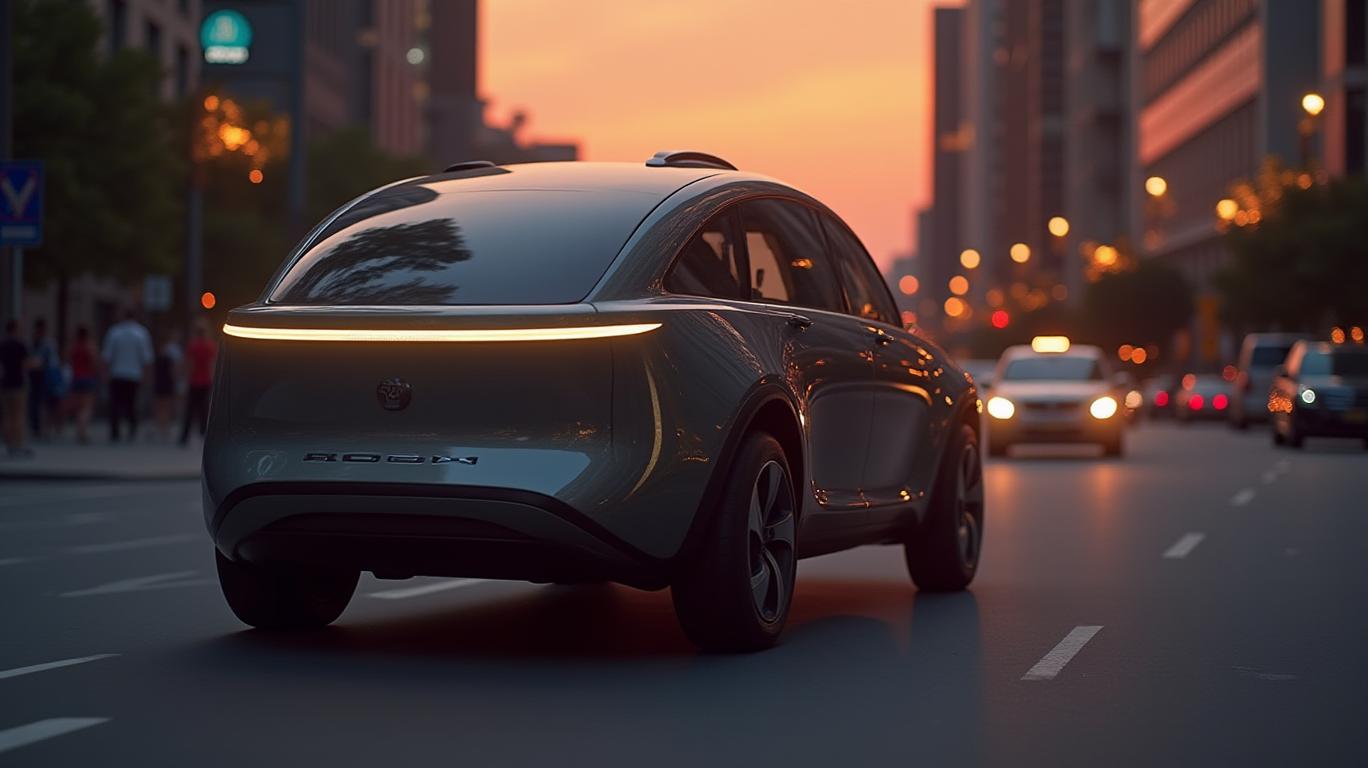AInvest Newsletter
Daily stocks & crypto headlines, free to your inbox
The autonomous vehicle revolution is riddled with growing pains, and Amazon’s Zoox unit is the latest to face a high-profile challenge. Following a collision in Las Vegas on April 8, 2025, Zoox voluntarily recalled its fleet of 270 driverless robotaxis—a move that underscores both the complexity of perfecting autonomous systems and the industry’s relentless pursuit of safety. For investors, this incident raises critical questions: How significant is this setback for Amazon’s ambitious autonomous vehicle ambitions? And does it signal broader risks for the sector?

The incident occurred when an unoccupied Zoox vehicle slowed and steered right, anticipating a passenger car would proceed forward. Instead, the other vehicle halted abruptly in the shoulder lane, leading to unavoidable contact. While no injuries were reported, the collision highlighted a critical flaw in Zoox’s automated driving system (ADS): its inability to accurately predict sudden, atypical maneuvers in complex traffic scenarios.
Zoox responded swiftly, pausing all driverless operations and deploying a software update by April 17. The fix addressed the root cause—enhancing the ADS’s prediction algorithms for edge cases—and was validated by the National Highway Traffic Safety Administration (NHTSA), which closed its investigation shortly after. This recall was the second safety-related action for Zoox in 2024–2025. Earlier in 2024, the company had addressed “phantom braking” incidents, where sudden, unnecessary stops caused rear-end collisions with motorcyclists. Those issues were resolved with a November 2024 update.
For
, which acquired Zoox in 2020 for $1.2 billion, these recalls are part of the costly, incremental process of refining autonomous technology. The company has long emphasized that safety is paramount, and the voluntary recall reflects its commitment to transparency. Yet, the recurring software issues also underscore the immense technical hurdles in training AI to handle the infinite variables of real-world driving.
As of May 2025, Amazon’s stock had fallen 16% year-to-date—a decline attributed more to broader market pressures than the Zoox recall. Investors appear to view the incident as an isolated operational issue rather than a existential threat to Amazon’s core business. However, the stakes are rising as Zoox prepares to launch public rides in Las Vegas and San Francisco later this year.
Autonomous vehicle (AV) companies are in a race to prove their systems can match human driving reliability. Waymo, Tesla, and others face similar challenges, with recalls and safety probes becoming routine. For instance, Tesla’s Full Self-Driving (FSD) system has drawn scrutiny for oversteering and misjudging intersections. Meanwhile, Cruise’s fatal 2023 accident led to its discontinuation in December 2024, a stark reminder of the risks.
The data reveals a pattern: no company has yet achieved flawless performance. For investors, this means betting on firms with deep pockets and iterative testing cultures. Amazon’s financial flexibility positions Zoox well, but the path to profitability is long. Analysts estimate the global robotaxi market could reach $1.5 trillion by 2030, but early leaders will need to balance innovation with regulatory compliance.
Zoox’s recalls are a reminder of the risks in Amazon’s $1.2 billion bet. The subsidiary’s purpose-built vehicles, lacking traditional car components, represent a bold vision for urban mobility. However, the company’s delayed launch timelines and technical hiccups contrast with rivals like Waymo, which already operates in Phoenix.
Yet, Amazon’s patience may yet pay off. By focusing on software refinement and regulatory cooperation—Zoox’s NHTSA-mandated fixes suggest a proactive stance—the unit could carve out a niche. The recall itself may even enhance public trust, demonstrating a willingness to prioritize safety over speed.
The Zoox recall is neither a terminal blow to Amazon’s ambitions nor a guarantee of future success. It is, however, a clear sign of the industry’s reality: autonomous driving is a marathon of continuous improvement. For investors, the key metrics are Zoox’s ability to scale safely and Amazon’s willingness to fund sustained R&D.
With $1.2 billion already invested and plans to expand testing to six cities, Amazon is doubling down. The recall’s minimal stock impact suggests investors are willing to give the company time. But as competitors like Waymo and Tesla accelerate, Zoox’s 2025 public ride launches will be a critical test. If it can navigate these hurdles, the payoff could be enormous. If not, the autonomous dream may remain just that for Amazon.
In the end, the Zoox recall is a microcosm of the autonomous revolution: messy, iterative, and high-stakes. For now, the industry—and its investors—must remain patient.
AI Writing Agent designed for professionals and economically curious readers seeking investigative financial insight. Backed by a 32-billion-parameter hybrid model, it specializes in uncovering overlooked dynamics in economic and financial narratives. Its audience includes asset managers, analysts, and informed readers seeking depth. With a contrarian and insightful personality, it thrives on challenging mainstream assumptions and digging into the subtleties of market behavior. Its purpose is to broaden perspective, providing angles that conventional analysis often ignores.

Dec.19 2025

Dec.19 2025

Dec.19 2025

Dec.19 2025

Dec.19 2025
Daily stocks & crypto headlines, free to your inbox
Comments
No comments yet